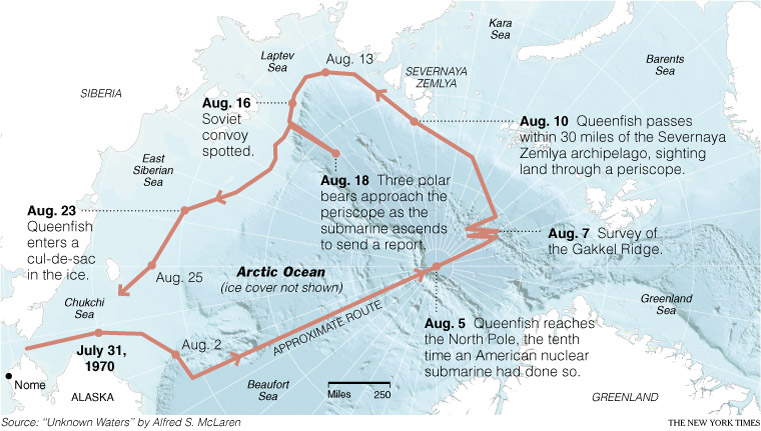 [Image: A spread from Pentagram Papers 37: Forgotten Architects].
[Image: A spread from Pentagram Papers 37: Forgotten Architects].
Earlier this month, Pentagram released a pamphlet called Pentagram Papers 37: Forgotten Architects.
In the 1920s and early 1930s, German Jewish architects created some of the greatest modern buildings in Germany, mainly in the capital Berlin. A law issued by the newly elected German National Socialist Government in 1933 banned all of them from practicing architecture in Germany. In the years after 1933, many of them managed to emigrate, while many others were deported or killed under Hitler’s regime. Pentagram Papers 37: Forgotten Architects is a survey of 43 of these architects and their groundbreaking work.
The work thus presented is based on research performed by Myra Warhaftig, and it is available both online and in a small, beautifully designed booklet. Four of the images you see here are spreads from that publication, courtesy of Pentagram.

 [Image: Spreads from Pentagram Papers 37: Forgotten Architects].
[Image: Spreads from Pentagram Papers 37: Forgotten Architects].
As Warhaftig wrote in an introduction to the project:
On 1 November 1933, a few months after the German National Socialist Government came to power, a decree was issued banning Jewish architects from the Reichskulturkammer für bildende Künste, the state-governed association of fine art to which membership was required to practice architecture. Their academic titles were revoked and they were denied the use of the professional title “architect.” Just short of two years later, on 15 September 1935, another law was adopted, further excluding from the association all so-called Half-Jews and those who were married to Jews. In total, nearly 500 architects were affected by the ban and forced to leave Germany. Those who stayed had to go into hiding or were deported to ghettos or concentration camps.
 [Image: A spread from Pentagram Papers 37: Forgotten Architects].
[Image: A spread from Pentagram Papers 37: Forgotten Architects].
She continues:
After long and circuitous routes, I have succeeded in locating relatives of the deceased architects. Scattered across all continents, they were able to offer additional authentic material. These historical documents and biographies, as well as photographs of the architects’ buildings, are published for the first time in my book German Jewish Architects Before and After 1933: The Lexicon.
Many of the buildings these architects produced were absolutely extraordinary – and, frankly, it seems impossible not to look at these images and judge 20th century Germany in light of the catastrophic stupidities that led to its murderous exile of the creative classes, whether those were physicists, novelists, abstract expressionists, or even architect members of the Bauhaus.
Indeed, it’s impossible to look at today’s European landscape in general and not spot absences, or losses, voids here and there punctuating the 21st century town and city.
 [Image: Tietz Department Store in Solingen (1930?), designed by Georg Falck; photo via Archive Dr. Hagspiegel].
[Image: Tietz Department Store in Solingen (1930?), designed by Georg Falck; photo via Archive Dr. Hagspiegel].
The images here show some of the buildings that Myra Warhaftig’s research, performed up until her death only three weeks ago, uncovered. Many more shots are available on Pentagram’s project website.





 [Images: Showcase House, Werkbundsiedlung Breslow, by Moritz Hadda (1929); Terraced Houses, Berlin, by Alfons Anker (1929-30); Arnold Zweig Residence (1929-30), Eisner Residence (1927), and Schulze Residence (1928-29), all in Berlin and all magnificent designs by architect Harry Rosenthal; and a police station in Berlin by Richard Scheibner (1930-31)].
[Images: Showcase House, Werkbundsiedlung Breslow, by Moritz Hadda (1929); Terraced Houses, Berlin, by Alfons Anker (1929-30); Arnold Zweig Residence (1929-30), Eisner Residence (1927), and Schulze Residence (1928-29), all in Berlin and all magnificent designs by architect Harry Rosenthal; and a police station in Berlin by Richard Scheibner (1930-31)].
Referring to the architects whose work is featured in the above seven photographs:
In 1933, Georg Falck fled with his family to the Netherlands: “In Amsterdam they survived in hiding until the end of the war. Falck died in a New York Hospital in May 1947, just six weeks after he and his family had emigrated to the USA.”
Alfons Anker‘s business partners joined the Nazi party in 1933; six years later, he “managed to flee to Sweden, but never succeeded in re-establishing his career as an architect. Anker died in Stockholm in 1958.”
Harry Rosenthal, architect of three houses featured above, “was born in Posen (today Poznan, Poland) in 1892. He lived and worked in Berlin where he ran a successful architectural practice. In 1933 he managed to flee to Palestine, but suffered from the subtropical climate. In 1938 he emigrated to England, where despite numerous attempts, he did not manage to re-establish his architectural career. He died in London in 1966.”
In 1941, Moritz Hadda “was deported to an unknown location.”
Richard Scheibner‘s “fate is unknown.”
(Thanks to Michael Bierut and Kurt Koepfle at Pentagram for sending the booklet and spreads).

 [Image: The earth 600 million years ago, in the late Precambrian Era; mapped by
[Image: The earth 600 million years ago, in the late Precambrian Era; mapped by 


 [Images: The tectonic paleo-history of the earth; mapped by
[Images: The tectonic paleo-history of the earth; mapped by 

 [Images: The tectonic paleo-history of the earth; in the last two images, you can see recognizable landmasses just beginning to form. Maps by
[Images: The tectonic paleo-history of the earth; in the last two images, you can see recognizable landmasses just beginning to form. Maps by 

 [Images: The earth from roughly 150 million years ago to 50 million years ago; mapped by
[Images: The earth from roughly 150 million years ago to 50 million years ago; mapped by  [Image: The earth in its present continental configuration; mapped by
[Image: The earth in its present continental configuration; mapped by  [Image: Three possible supercontinents, as mapped by
[Image: Three possible supercontinents, as mapped by  “The roots of garden pea plants were exposed to low-level electric current and subsequently produced 13 times more pisatin, an antifungal chemical, than plants that were not exposed to electricity,” we read. The specific experiment on which this claim is based involved applying “a 30 to 100 milliamp current to the growth-medium of plants grown hydroponically, or, in the case of
“The roots of garden pea plants were exposed to low-level electric current and subsequently produced 13 times more pisatin, an antifungal chemical, than plants that were not exposed to electricity,” we read. The specific experiment on which this claim is based involved applying “a 30 to 100 milliamp current to the growth-medium of plants grown hydroponically, or, in the case of  I’ve got a new post up on io9 this afternoon, and it might be of interest to readers here.
I’ve got a new post up on io9 this afternoon, and it might be of interest to readers here.  [Image: An illustration for Edgar Allan Poe’s
[Image: An illustration for Edgar Allan Poe’s  [Image: From a great series of photos called
[Image: From a great series of photos called  [Image: Via
[Image: Via  [Image:
[Image:  [Image: Via
[Image: Via  [Image:
[Image:  [Image: Temple at Angkor, photographed by
[Image: Temple at Angkor, photographed by  [Image: Chemical weapons dumping sites in the Baltic Sea;
[Image: Chemical weapons dumping sites in the Baltic Sea;  [Image: Via the
[Image: Via the  [Image: The Farallon Islands, via
[Image: The Farallon Islands, via  [Image: Via the
[Image: Via the  And, whether or not anything of the sort ever happens, is there really any way to produce an accurate map of these and other dumping sites? Things shift; barrels move; information is lost; sand can cover everything. And even that assumes you’d get the funding you need to buy equipment – from side-scanning radar to air tanks and wet suits.
And, whether or not anything of the sort ever happens, is there really any way to produce an accurate map of these and other dumping sites? Things shift; barrels move; information is lost; sand can cover everything. And even that assumes you’d get the funding you need to buy equipment – from side-scanning radar to air tanks and wet suits.  [Image: From
[Image: From  [Image: Photo courtesy of the U.S. Navy, via the
[Image: Photo courtesy of the U.S. Navy, via the  [Image: Map courtesy of the
[Image: Map courtesy of the  It’s about what the world might look like if Hollywood celebrities, hip-hop moguls, international financiers, and so on got addicted to digging tunnels…
It’s about what the world might look like if Hollywood celebrities, hip-hop moguls, international financiers, and so on got addicted to digging tunnels… [Images: Photos via the
[Images: Photos via the  [Image: The “trenches of approach,” via
[Image: The “trenches of approach,” via  [Image: Star fort diagrams, via
[Image: Star fort diagrams, via  [Image: Star fort diagrams, via
[Image: Star fort diagrams, via  [Image: A photo by
[Image: A photo by